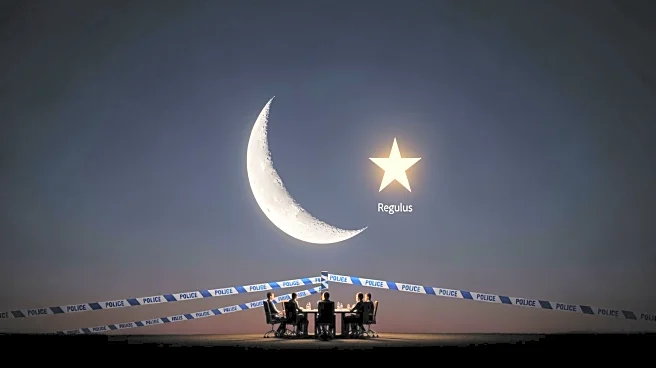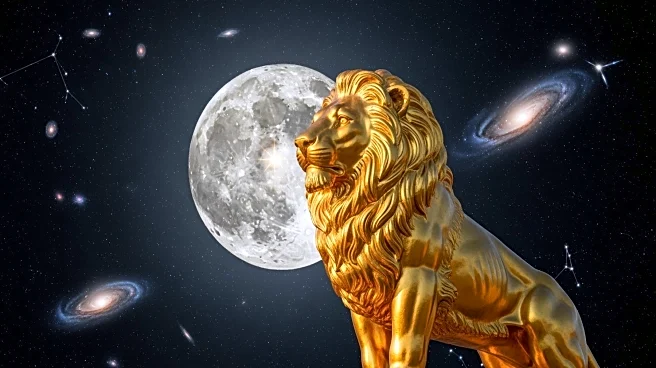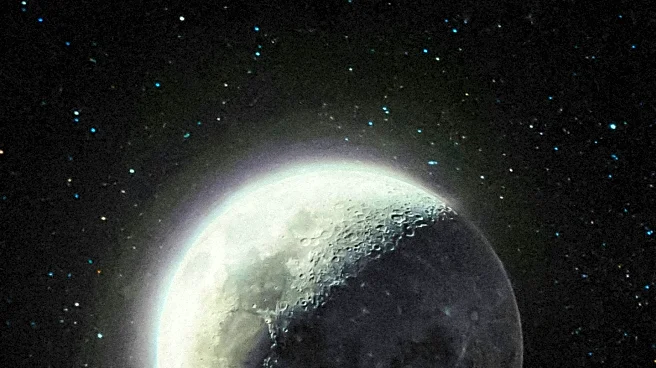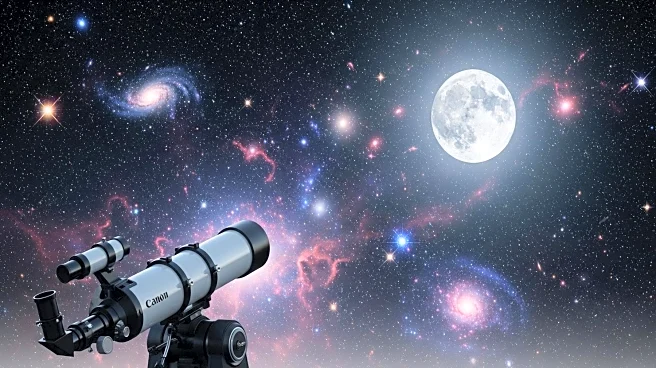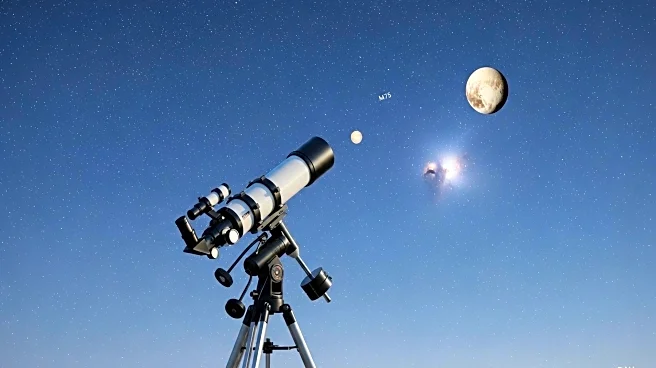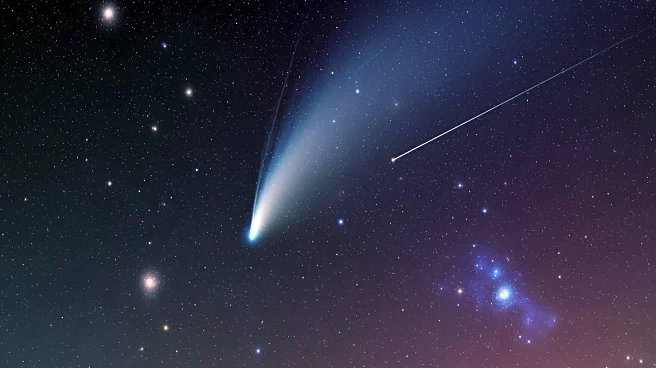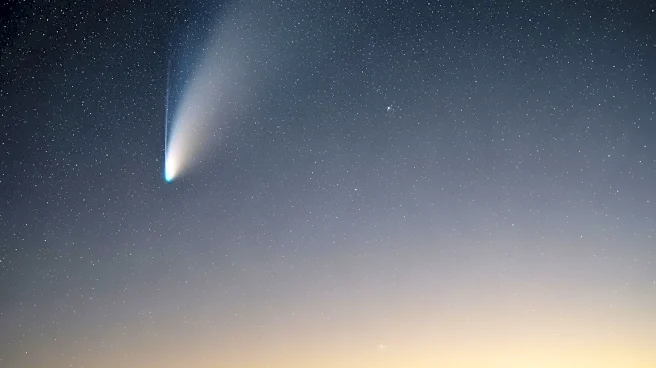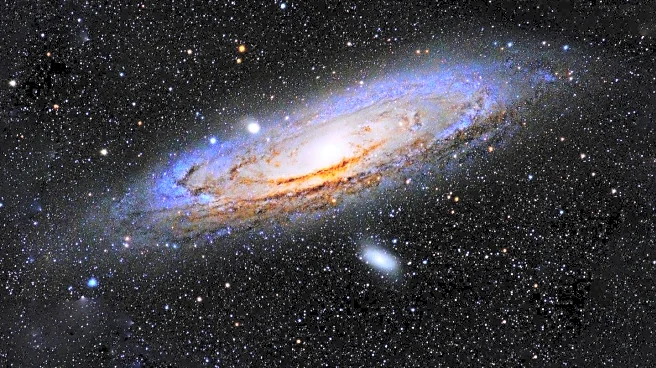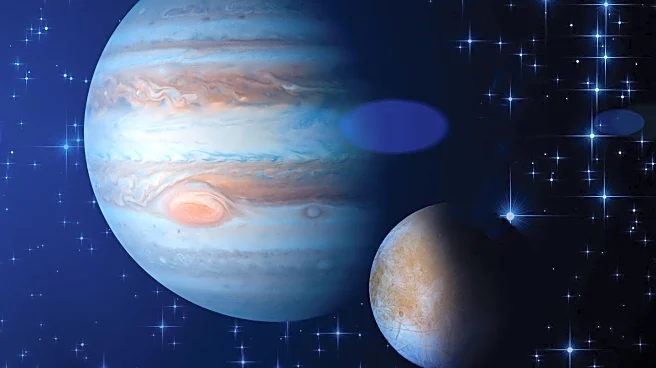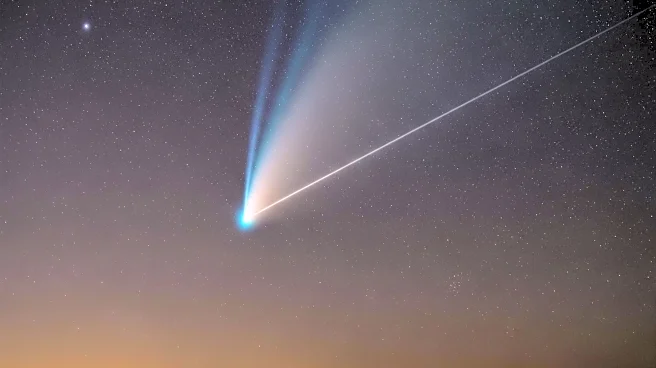What's Happening?
On October 16, 2025, the waning crescent Moon will rise alongside Regulus in the constellation Leo, offering a celestial spectacle for early morning observers. The Moon, at 18% illumination, will be positioned
near the Sickle asterism, a group of stars resembling a backward question mark. Regulus, a quadruple-star system, shines 150 times brighter than the Sun and is a key component of this asterism. Observers can expect the Moon to pass 1.2° north of Regulus at 2 P.M. EDT, with noticeable positional changes by the following morning.
Why It's Important?
This event highlights the intricate dance of celestial bodies and offers a unique opportunity for amateur astronomers and enthusiasts to observe the Moon's proximity to a major star system. Such events foster public interest in astronomy and provide educational opportunities to learn about star systems and their characteristics. The visibility of Regulus, a quadruple-star system, underscores the complexity and beauty of the universe, encouraging further exploration and study.
What's Next?
Observers are encouraged to continue monitoring the sky for other celestial events, such as the upcoming Orionids meteor shower, which will peak on October 22-23. These events provide ongoing opportunities for engagement with astronomy and can inspire future interest in space exploration and science.
Beyond the Headlines
The conjunction of the Moon and Regulus serves as a reminder of the vastness and interconnectedness of the universe. It highlights the importance of preserving dark skies for astronomical observation and the role of astronomy in enhancing our understanding of the cosmos.
